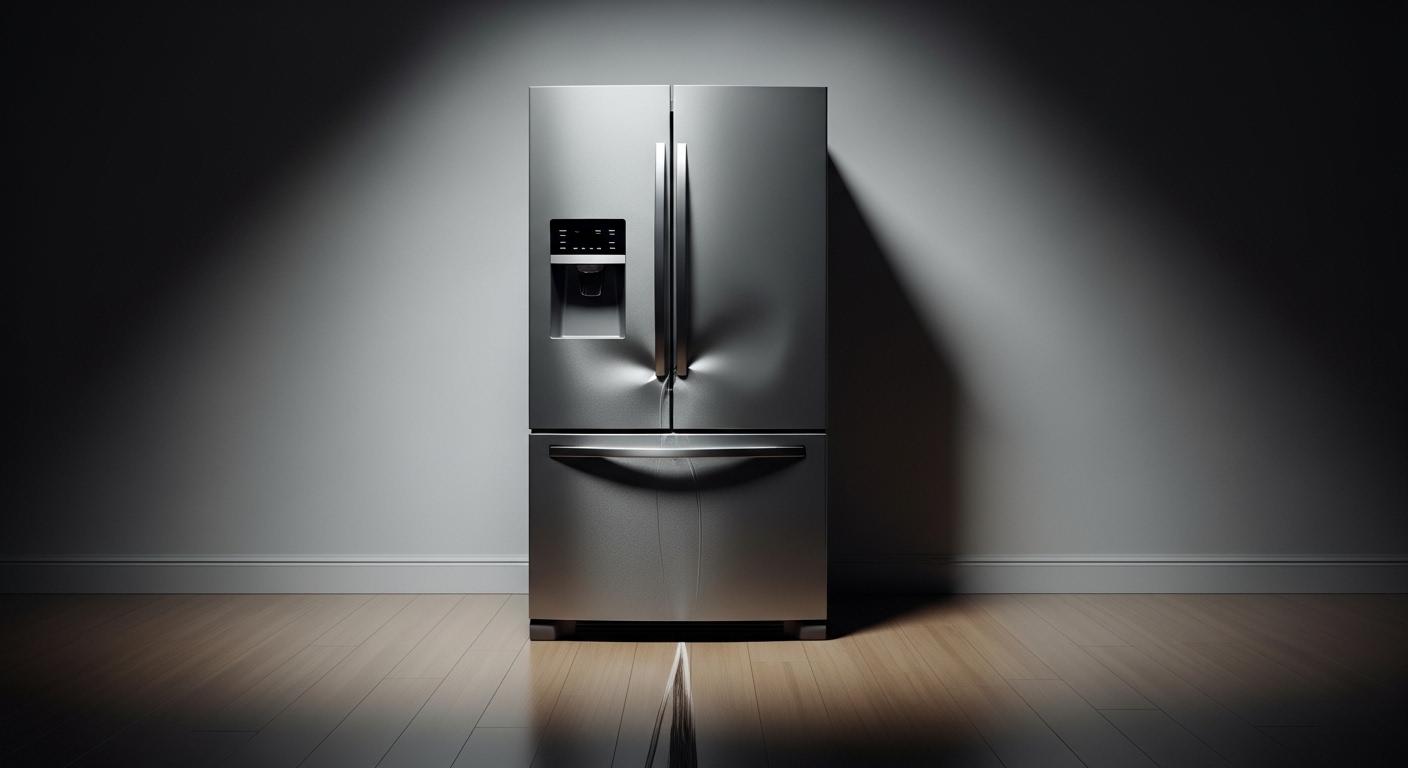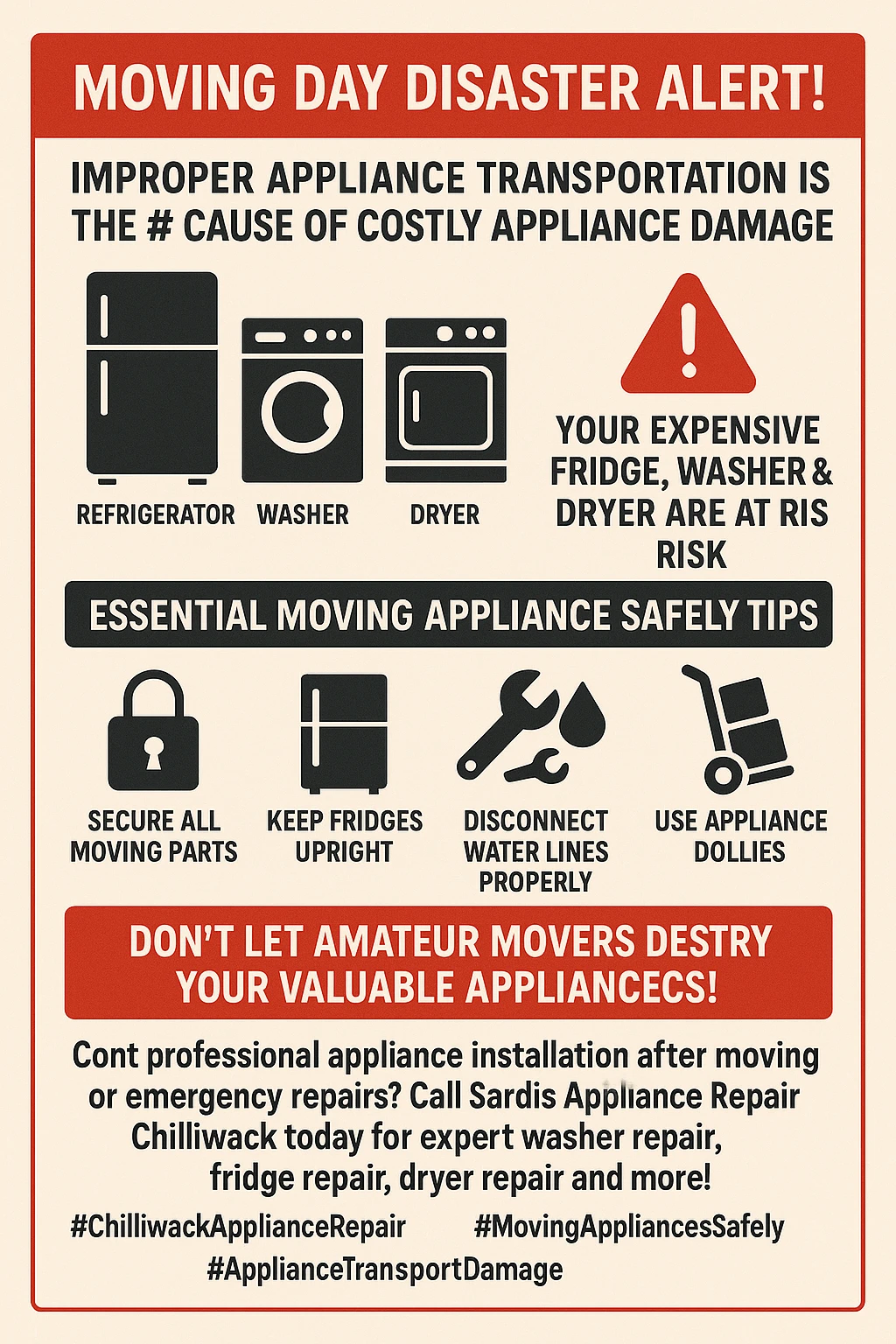The Appliance Moving Disaster: How Improper Transportation Is Destroying Your Appliances (And What Chiliwack Homeowners Need to Know Before Their Next Move)
Moving day anxiety hitting hard because you’re worried about your expensive appliances making the journey in one piece? You’re absolutely right to be concerned – improper appliance transportation is silently destroying thousands of dollars worth of household equipment across Chiliwack every single year, and most homeowners have no idea they’re walking into a financial disaster.
Picture this: you’ve just spent months planning your perfect move to that gorgeous new place in Sardis, everything’s packed and ready, and then disaster strikes. Your two-year-old stainless steel refrigerator that cost you $3,000 arrives at your new home with a completely dead compressor. Your front-loading washer now sounds like a cement mixer during the spin cycle. And that sleek induction cooktop you splurged on last Christmas? Yeah, it’s got a spider web of cracks that basically turns it into an expensive paperweight.
This nightmare scenario plays out for Fraser Valley homeowners every single week, and the worst part? Most of this damage is completely preventable. The problem is that both professional movers and DIY enthusiasts are making critical mistakes that turn routine relocations into appliance graveyards. From refrigerators being laid flat during transport to washing machines bouncing around without their transit bolts, these “small” oversights are causing massive headaches and even bigger repair bills.
The stakes are higher than you think too. Modern appliances aren’t just expensive – they’re incredibly complex machines packed with sensitive electronics, precision-calibrated components, and sealed systems that can fail catastrophically if handled wrong. When these systems break during a move, you’re not just looking at repair costs; you’re dealing with voided warranties, emergency replacement expenses, and sometimes even property damage that can cost thousands more.

Key Outtakes:
- Over 82% of appliance service professionals have damaged floors while moving appliances, with damages often exceeding $500 per incident
- Refrigerators must stay upright during transport and require 4-6 hours of settling time before plugging in to prevent compressor damage
- Washing machines over 200 pounds need transit bolts installed to prevent internal drum damage during transportation
- DIY appliance moving attempts frequently result in higher total costs than professional services when damage and injury risks are calculated
- Chiliwack’s climate and terrain create unique transportation challenges that require specialized protection strategies

The Scale of Appliance Transportation Disasters
Let’s talk about the elephant in the room – appliance transportation damage isn’t just a minor inconvenience that happens occasionally. We’re dealing with what industry insiders are calling a “silent epidemic” that’s costing homeowners across Canada millions of dollars every year. The numbers are honestly pretty shocking when you dig into them.
Recent surveys from appliance service professionals reveal that 82% of technicians have caused floor damage while moving appliances, and that’s just the stuff that’s immediately visible. We’re talking about scratched hardwood, cracked tiles, and gouged luxury vinyl that can cost anywhere from $500 to several thousand dollars to repair properly. But here’s the kicker – that’s just the floor damage, not even counting what’s happening to the appliances themselves.
The complexity of modern appliances makes them sitting ducks for transportation damage. Your grandmother’s avocado green fridge from the 1970s was basically an insulated box with a simple compressor. Today’s smart refrigerators are essentially computers that happen to keep food cold, packed with touch screens, Wi-Fi modules, multiple cooling zones, and precision-calibrated sensors that can go haywire if they get jostled too hard during a move.
Think about your washing machine for a second. Inside that sleek exterior is a massive drum that spins at incredible speeds, suspended by a complex system of springs, shock absorbers, and counterweights. When that system gets damaged during transport – which happens way more often than you’d expect – you end up with a machine that sounds like it’s trying to escape through your laundry room floor every time it hits the spin cycle.
The financial ripple effects go way beyond just fixing or replacing damaged appliances. Insurance companies are getting pickier about what they’ll cover, with many policies specifically excluding transportation damage. Warranty coverage gets voided faster than you can say “moving truck,” leaving you holding the bag for expensive repairs on appliances that should still be covered. And don’t even get me started on the emergency replacement costs when your fridge dies right after you’ve loaded it with $400 worth of groceries.
Common Types of Appliance Damage During Transport
Now that we’ve established this is a real problem, let’s dive into the specific ways your appliances can get destroyed during a move. Understanding these failure patterns isn’t just academic – it’s the key to preventing them from happening to you.
Refrigerators and freezers are probably the most vulnerable appliances during a move, and the damage often isn’t obvious until days or weeks later. The sealed cooling system in your fridge contains pressurized refrigerant and oil that need to stay in specific locations to work properly. When refrigerators get tilted too far or – heaven forbid – laid on their sides during transport, this oil can flow into places where it shouldn’t be, potentially causing complete compressor failure.
Here’s what makes this particularly nasty: compressor damage doesn’t always show up immediately. Your fridge might seem to work fine for the first few days in your new home, then gradually start losing its ability to maintain proper temperatures. By the time you realize there’s a problem, you’ve already moved in, unpacked everything, and probably lost your moving receipts. The repair bill for a failed compressor typically runs between $800 and $1,500, assuming you can even find someone willing to fix it rather than just telling you to buy a new fridge.
Washing machines present their own unique set of challenges that most people completely overlook. The drum inside your washer is designed to be perfectly balanced and suspended when the machine is level and stationary. During transport, if those transit bolts aren’t installed properly – or worse, if nobody even knows they exist – that heavy drum becomes a wrecking ball inside your appliance.
The damage from improperly transported washing machines often shows up as excessive vibration, loud banging noises during the spin cycle, or clothes that come out still soaking wet because the drum can’t reach proper speeds. Transit bolts are essential for any washer over 200 pounds, but you’d be amazed how many professional movers don’t know this basic requirement.
Dishwashers might seem more straightforward, but they’re actually packed with precision components that can fail in subtle ways. The pump systems that spray water throughout the unit are calibrated for specific pressure levels and flow patterns. Impact damage during transport can knock these systems out of alignment, leading to poor cleaning performance, excessive noise, or water remaining in the bottom of the tub after cycles complete.
Electric ranges and cooktops, especially those with glass surfaces, are incredibly vulnerable to cracking and shattering during transport. Even small impacts that might not seem significant can cause stress fractures that spread over time, eventually making the entire cooktop unsafe to use. The replacement cost for a glass cooktop alone often runs $400-800, not including labor for installation.

DIY Moving Disasters and Hidden Costs
After hearing about all these potential problems, you might be thinking “I’ll just move everything myself to save money and make sure it’s done right.” Hold up there, champion – DIY appliance moving is where things often go from bad to catastrophic, and the hidden costs can make professional movers look like a bargain.

Let’s start with the physical realities here. A standard refrigerator weighs between 250-400 pounds, and that weight isn’t evenly distributed. The center of gravity shifts as you tilt it, making it incredibly awkward and dangerous to maneuver, especially up or down stairs. I’ve seen too many weekend warriors end up in the emergency room with back injuries, herniated discs, or worse because they underestimated just how brutal moving a fridge can be on your body.
The equipment costs for DIY appliance moving add up faster than you might expect. You’ll need specialized appliance dollies (not just regular furniture dollies), heavy-duty straps rated for the weight, moving blankets, floor protection, and probably a truck large enough to transport everything safely. Professional equipment
 (604) 305-2992
(604) 305-2992 
 Schedule An Appointment
Schedule An Appointment 
